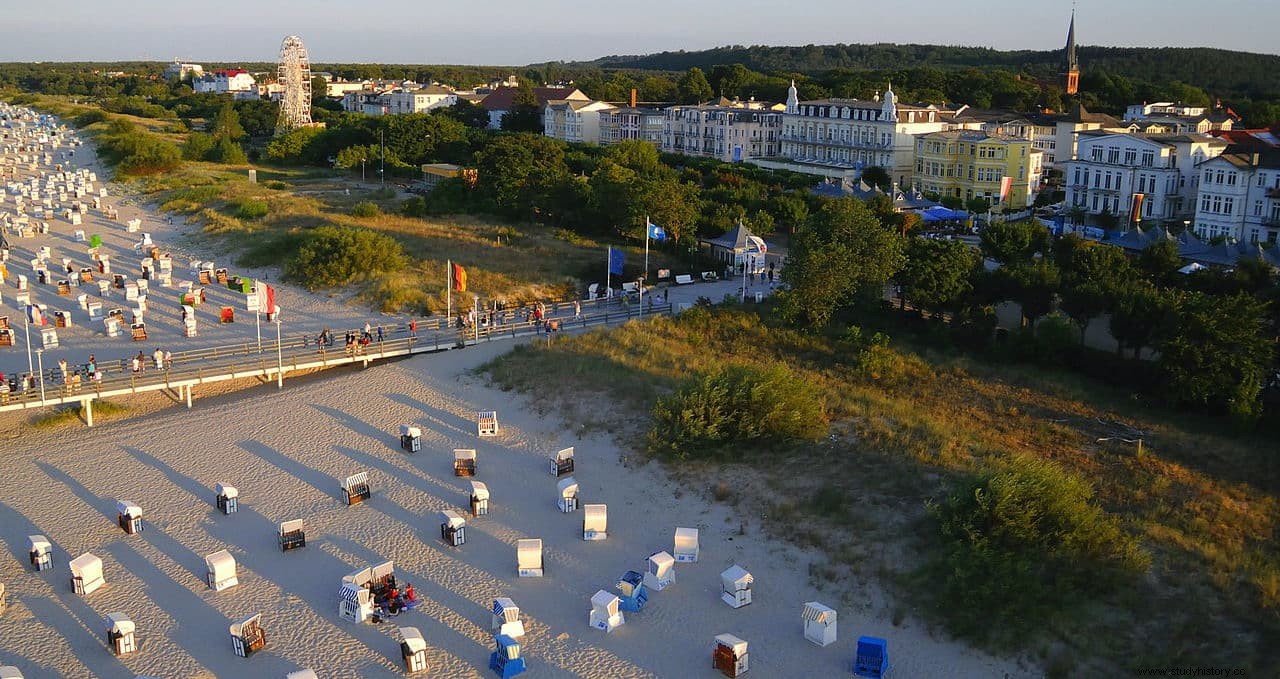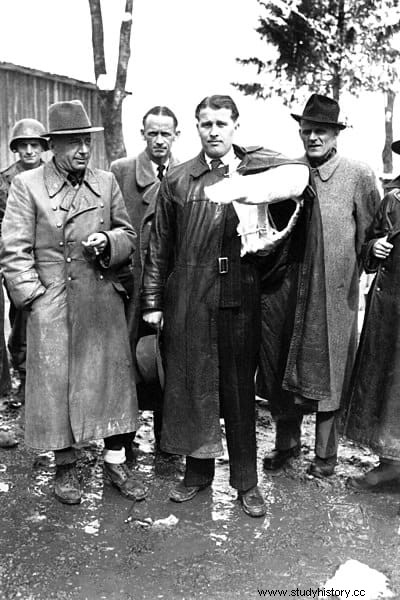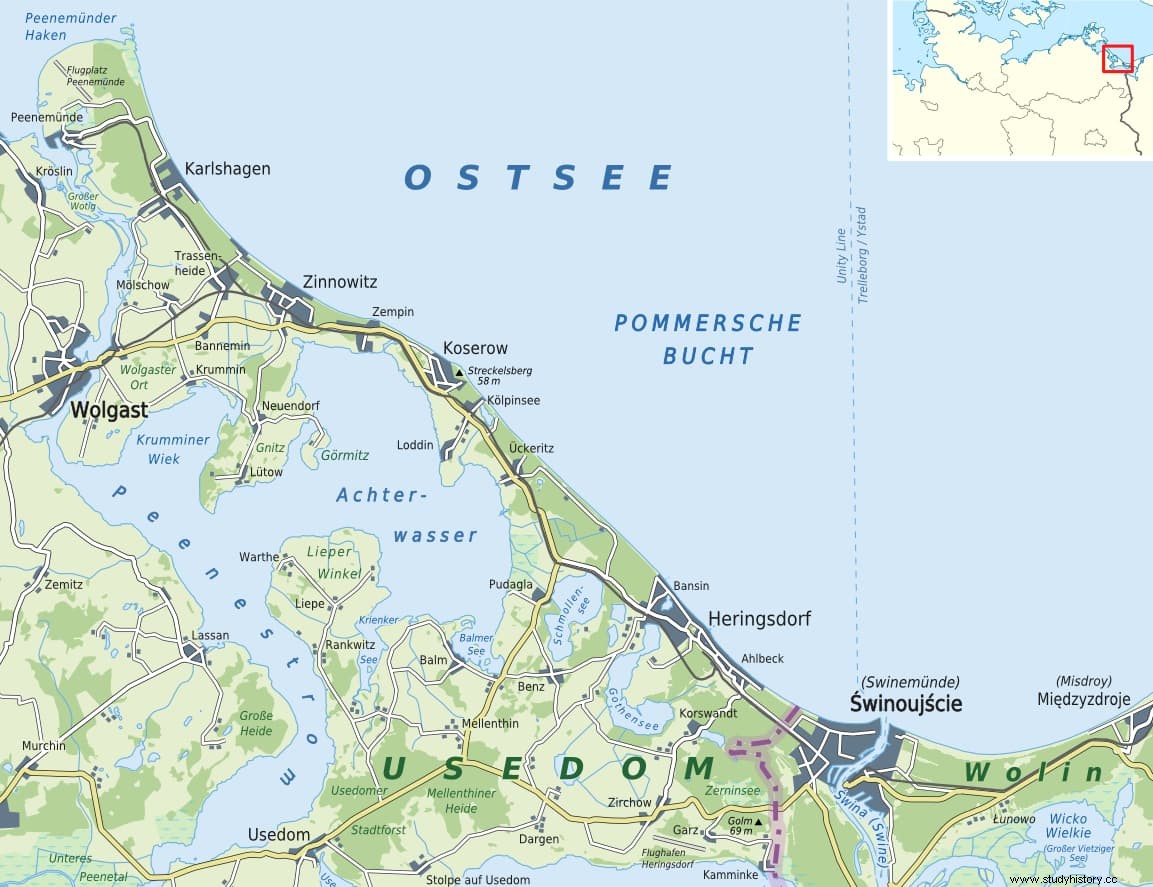As is known, the missiles current had as precursors to the projectiles V-1 and V-2 developed by the Luftwaffe (the German air force) since the 1930s, under the Nazi government , and put into service after 1944.
The V-1 made its test flight in late 1941 and saw action in June 1944 targeting London, while its successor, the V-2, was dropped over Paris three months later. Apart from the innovative weapons concept, both had one thing in common:they were developed and manufactured in a place called Peenemünde .
It is a municipality located on the small island of Usedom, itself located at the mouth of the Peene River. This river course runs through northwestern Germany, from Lake Kummerow to enter Pomerania to empty into the Szczecin Lagoon (also called the Oder), the largest estuary in the Baltic Sea with almost a thousand square kilometers.

Usedom is not the only island in the area, as there are two others (Wollin and Kaseburg), but the one that interests us in this article is Usedom, a 445-square-kilometer strip of land that separates the lagoon from the open sea.
As with the entire lagoon, Germany and Poland Today they share ownership of that island land where some 77,000 people live and which, curiously, has become an attractive holiday destination for being the German corner with the greatest number of hours of sunshine (1906 a year, on average) and for the set of spas built there since the 19th century precisely for that reason.

However, the other side of its fame is in that chapter of history that we mentioned at the beginning, as a factory and base for the first ballistic rockets.
Indeed, it was the site chosen to locate the Army Research Center in 1937. , where German physicists worked for decades on those weapons.
The V-1, designed by Robert Lussar and Fritz Gosslau, had little effectiveness because only a quarter of the launched units reached their objective, either due to their own failures or because of the defensive countermeasures that opposed them:of the 30,000 manufactured, they reached shoot a third, 10,000, of which only 2,419 managed to hit on British soil; yes, they killed 6,184 people and injured 17,981.

The relay was taken over by the V-2, already a direct antecedent of modern missiles, from which some 3 thousand units were launched against Paris, London and Antwerp, producing 7,250 fatalities , although its use was useless because the war was already in its final phase.
The V-2 was designed by Werner von Braun and his team, which in 1937 was transferred from his laboratory in Kummersdorf (Brandenburg), where they had been working for three years, to Peenemünde, under the command of General Walter Dornberger; they were all known as the peenemünders . On the island, facilities were made available to them, structured into nine departments, which included technical design services, mathematics, ballistics, a wind tunnel, several thematic laboratories...
The danger that the V-2 posed to the allies due to interception difficulties (they were too fast for the planes) made them try to deal with the problem at source and, in March 1945, 671 US Air Force bombers dropped 1,600 tons of bombs on Usedom , devastating the island and causing some 23,000 deaths among the population.
But they achieved their goal:the launch ramps were destroyed and all the technical equipment too. This forced the Luftwaffe to move production elsewhere: Nordhausen , an inland city in the state of Thuringia, which, however, was also crushed by Allied planes in April.

At the beginning of the following month the Red Army he took the island (he would do the same with Nordhausen in July), which prepared the port to establish a naval base. In 1952 it was ceded to theGerman Democratic Republic , since the island had been in the eastern part of the country, to serve as a station for the Seepolizei (maritime police), although in 1956 the 1st Fleet of the Volksmarine was stationed there .
However, some of the Nazi facilities survived battered, like dark ghosts of the past; were the cases of thegas plant , which was used for the production of liquid oxygen, and the power station , which today houses the headquarters of the THM (Historisch-Technisches Museum Peenemünde ), a World War II museum which opened its doors in 1992 and includes in its collection, as its most representative pieces, a V-1 and a V-2.
